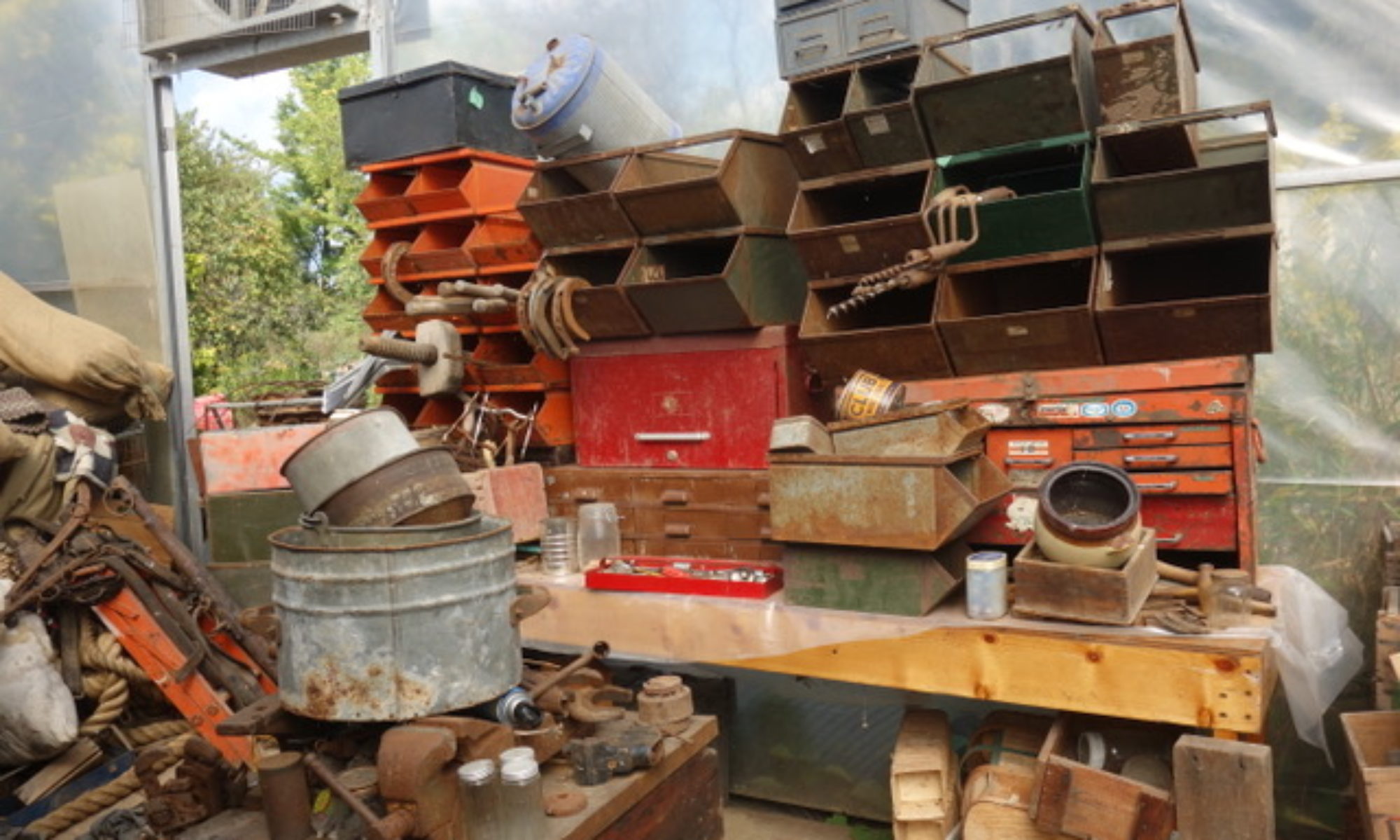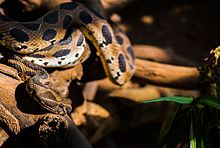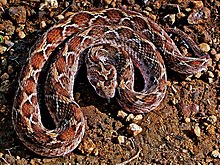ALAN SKEOCH
FEB. 2019
(supplement to Ten Years in the Wilderness)
THE DANGEROUS ONTARIO VIPER: A CRUEL JOKE
“Any snakes?”
“Yes, watch out for the Ontario Viper.”
“Ontario viper?”
“Deadly?…many around here?”
“Lots…they love swamps like this.”
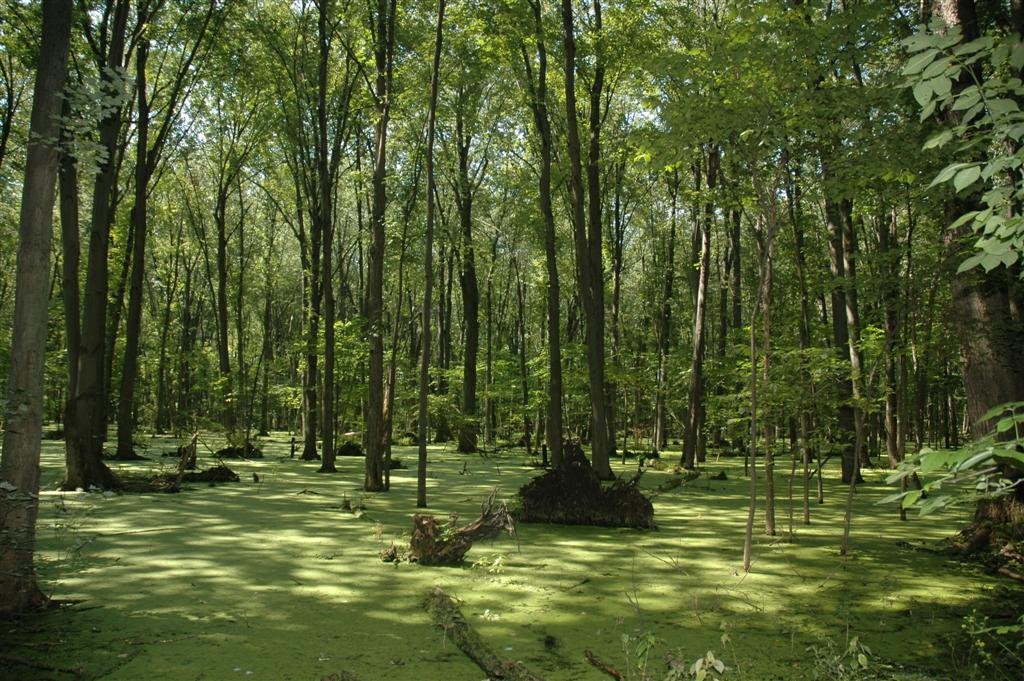
Picture: Much of the 2400 hectare Beverly Swamp looked like this picture only the clumps of trees were cedars. The water was
shallow, maybe a foot or two in most places. But occasionally!!! Occasionally there were deep holes where clumps of cedars
had been blown over. These holes could be 3 or 4 feet deep. “And?” And I am not proud of what happened here. Sometimes
jokes are just not funny in retrospect.
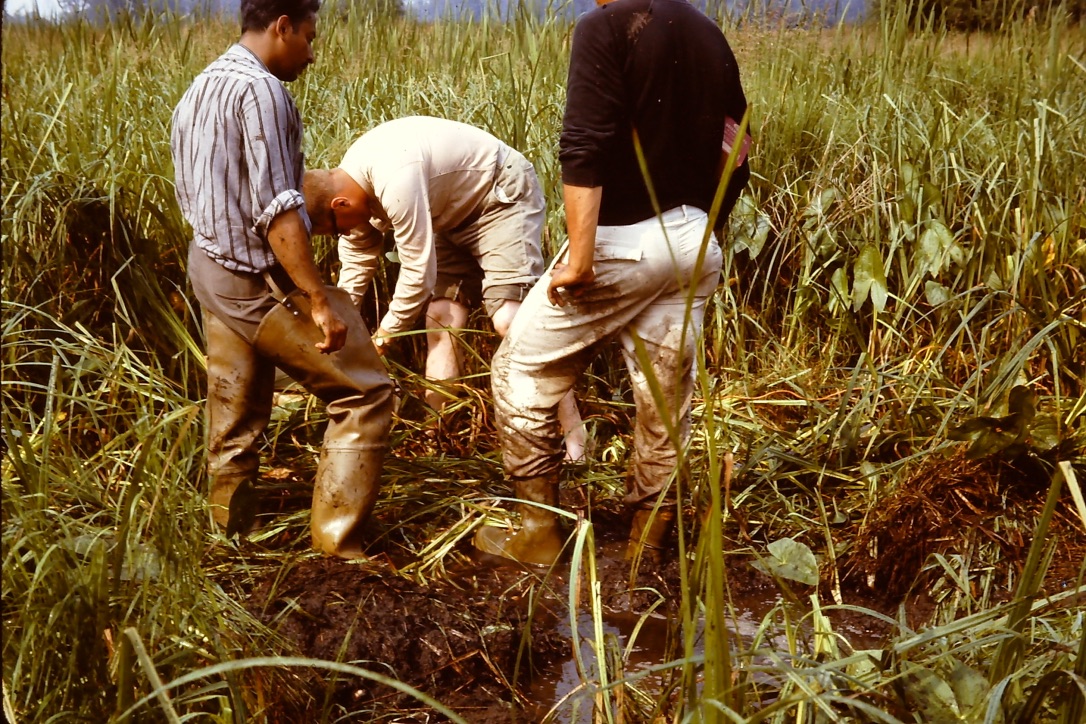
Picture: Notice the person in the high hip waders. His name is Maxie Ranasigh. He feared snakes would get him. That was all
we needed to know. “Let’s have some fun with Maxie.” What followed was a very bad joke.
ANY SNAKES?
The snake incident makes me flinch when I think about even now…65 years later.
Let’s call it ‘the Ontario Viper’ saga. You will think less of us after reading this confession, that’s for sure.
Remember we were 19 or 20 when this grand idea popped into our
heads. And we were doing a seismic job through the Beverly Swamp, a 2400 hectare wild land south of
Hamilton. Dan B. was my partner on that seismic job. In addition we were assigned a Colombo Plan
geophysicist from Ceylon named Maxi Ranasingh. I’m afraid we did not set a fine example of
Canadian graciousness. What we thought was funny some readers may consider tasteless … even gross.



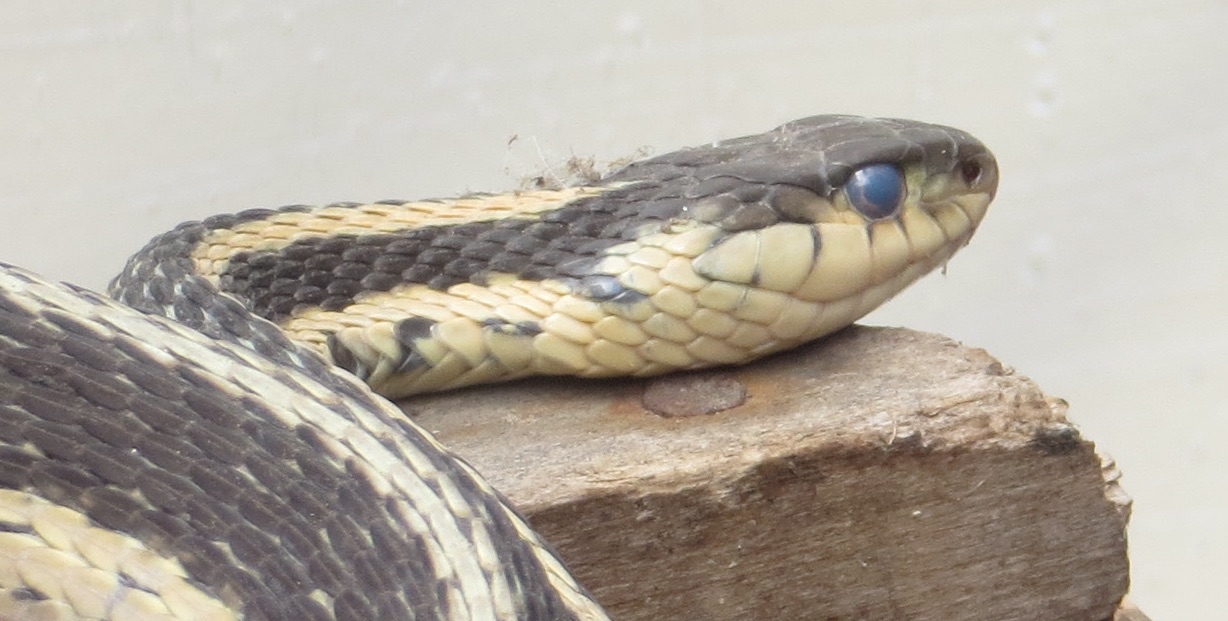
Picture: You are looking at the ONTARIO VIPER….commonly known as the HARMLESS GARTER SNAKE…but Maxie did not know that.
“These Canadian swamps can be dangerous, Maxie. So be Careful.”
“Why? What danger?
“The deadly Ontario viper could be in here?”
“Ontario viper?”
“Deadliest snake in Canada…perhaps three feet long, dark green with a thin red stripe “
“Any in this swamp?”
“They are everywhere.”
“I got these hip waders to avoid getting wet. Will they also protect me?”
“Should do unless you accidentally step into a big swamp hole and a viper crawls down inside the hip wader.”
“You boys lead on.”

And so we entered a long stretch of the Beverly swamp that looked much like the photo
…trees that loved water, mostly clusters of cedars. Some of these clusters had been toppled
by a windstorm thereby creating deep holes in the normally shallow swamp. Dan and I stirred up
the mud and broken tree roots as we crossed through one of these holes…a deep one.
“Carefull, Dan, this looks like s deep one.”
“Keep the instrument high.”
“Did you tell Maxi about the hole?”
“No, did you?”
“Nope.”
“Then he doesn’t know the hole is about three feet deep?”
“He has no idea.”
Then Maxie stepped in the hole. Suubmerged up to his ass Black gucky water poured into his hip waders…
pieces of tree roots that could seem like snakes with a little
imagination. Maybe an Ontario viper slipped down
his legs along with all the guck.
“MY waders are full!…I can’t move…slimy things down my legs…”
No easy escape. The water filled waders were like the cement overshoes in gang murders. Maxie could
barely move. He tumbled his way to a clearing. Scared for sure.
Now Dan and I thought this was really funny. We even considered it part of Maxie’a education…the practical
side of being a geophysicist. Whenever a new person joined s field crew, jokes like this were rampant. Like
Scratching the tent wall simulating a bear when the new guy is wrapped up in his sleeping bag. Or hiding
his fly net when the black flies were at their worst. Or making sure the worms in the bacon slab are visible
and not removed. Or telling stories abut bush planes that crash. “Those seabees fall like rocks if the engine falls, no
glide.” Or putting pine gum on the sitting bar at the latrine. Or telling a new guy that pike are delicious and
bone free. Or stopping suddenly…”Did you hear that? We’re being tracked by a wolverine.” Or telling a new
guy why we do not carry guns…”Danger we might shoot each other…cooped up together breeds hatred.”
Or be careful with the Forcite…”slide the detonator in slowly…if there is too much friction it could explode.”
The chances to pick on a new man were almost infinite.
But the joke on Maxi backfired. I still feel badly about it.
After Maxie emptied his hip waders and after we were through laughing we queried Maxie
on snakes in Ceylon (now Sri Lanka).
“Any vipers in Ceylon, Maxie?”
‘Many of them…and other deadly snakes well.”
:Deadly?”
“If bitten, a victim has about 30 to 60 minutes to get to a hospital or die.”
“No joke, Maxie? Are snakes that deadly common?”
“Very common in certain places.”
“Names?”
“Sea snake, Saw Scaled Viper (kills 5,000 people annually) , Russels’s Viper (kills 25,000 people annually), Hump Nosed Viper, Green Pit Viper, Common Krait (KILLS 10,000 per year in India), Common Cobra, Ceylon Krait, …
all are very bad. One kind of cobra can spit its venom up to 3 metres away. That’s 10 feet. Snakes in my country are not funny. And there are lots of them.
“How many?”
“We have more than 93 snake varieties…many deadly snakes. Of the five most dangerous snakes in the world, three of them
are in my country. Ceylon has the highest rate of snakebite deaths in the world.”
NO LAUGHING MATTER…OBVIOUSLY WE WERE EMBARASSED.
You might be surprised to know that these facts made our little joke less funny. Below are four of the most deadly snakes that Maxie Ranasingh could have described
if we could have stopped laughing at our joke as he struggled to pull off his hip waders.
Common krait[edit]
The common krait (Bungarus caeruleus) is often considered to be the most dangerous snake species in India. Its venom consists mostly of powerful neurotoxins which induce muscle paralysis. Clinically, its venom contains presynaptic and postsynaptic neurotoxins,[67] which generally affect the nerve endings near the synaptic cleft of the brain. Due to the fact that krait venom contains many presynaptic neurotoxins, patients bitten will often not respond to antivenom because once paralysis has developed it is not reversible.[68] This species causes an estimated 10,000 fatalities per year in India alone.[66] There is a 70-80% mortality rate in cases where there is no possible or poor and ineffective treatment (e.g., no use of mechanical ventilation, low quantities of antivenom, poor management of possible infection). Average venom yield per bite is 10 mg (Brown, 1973), 8 to 20 mg (dry weight) (U.S. Dept. Navy, 1968), and 8 to 12 mg (dry weight) (Minton, 1974).[67] The lethal adult human dose is 2.5 mg.[68][69] In mice, the LD50 values of its venom are 0.365 mg/kg SC, 0.169 mg/kg IV and 0.089 mg/kg IP.[15]
Russell’s viper[edit]
Russell’s viper (Daboia russelii) produces one of the most excruciatingly painful bites of all venomous snakes. Internal bleeding is common. Bruising, blistering and necrosis may appear relatively quickly as well.[70] The Russell’s viper is irritable, short-tempered and a very aggressive snake by nature and when irritated, coils tightly, hisses, and strikes with lightning speed. This species is responsible for more human fatalities in India than any other snake species, causing an estimated 25,000 fatalities annually.[66] The LD50 in mice, which is used as a possible indicator of snake venom toxicity, is as follows: 0.133 mg/kg intravenous, 0.40 mg/kg intraperitoneal, and about 0.75 mg/kg subcutaneous.[71] For most humans, a lethal dose is approximately 40–70 mg. However, the quantity of venom produced by individual specimens is considerable. Reported venom yields for adult specimens range from 130–250 mg to 150–250 mg to 21–268 mg. For 13 juveniles with an average length of 79 cm, the average venom yield was 8–79 mg (mean 45 mg).[13]
Saw-scaled viper[edit]
The Saw-scaled viper (Echis carinatus) is small, but its unpredictability, aggressive temper, and lethal venom potency make it very dangerous. This species is one of the fastest striking snakes in the world, and mortality rates for those bitten are very high. In India alone, the saw-scaled viper is responsible for an estimated 5,000 human fatalities annually.[66] However, because it ranges from Pakistan, India (in rocky regions of Maharashtra, Rajasthan, Uttar Pradesh and Punjab), Sri Lanka, parts of the Middle East and Africa north of the equator,[72] is believed to cause more human fatalities every year than any other snake species.[73] In drier regions of the African continent, such as sahels and savannas, the saw-scaled vipers inflict up to 90% of all bites.[74] The rate of envenomation is over 80%.[75] The saw-scaled viper also produces a particularly painful bite. This species produces on the average of about 18 mg of dry venom by weight, with a recorded maximum of 72 mg. It may inject as much as 12 mg, whereas the lethal dose for an adult human is estimated to be only 5 mg.[18] Envenomation results in local symptoms as well as severe systemic symptoms that may prove fatal. Local symptoms include swelling and intense pain, which appear within minutes of a bite. In very bad cases the swelling may extend up the entire affected limb within 12–24 hours and blisters form on the skin.[76] Of the more dangerous systemic symptoms, hemorrhage and coagulation defects are the most striking. Hematemesis, melena, hemoptysis, hematuria and epistaxis also occur and may lead to hypovolemic shock. Almost all patients develop oliguriaor anuria within a few hours to as late as 6 days post bite. In some cases, kidney dialysis is necessary due to acute renal failure (ARF), but this is not often caused by hypotension. It is more often the result of intravascular hemolysis, which occurs in about half of all cases. In other cases, ARF is often caused by disseminated intravascular coagulation.[76]
Philippine cobra[edit]
The Philippine cobra (Naga philippinensis) is one of the most venomous cobra species in the world based on murine LD50 studies. The average subcutaneous LD50 for this species is 0.20 mg/kg.[15] The lowest LD50 reported value for this snake is 0.14 mg/kg SC, while the highest is 0.48 mg/kg SC.[115] and the average venom yield per bite is 90–100 mg.[15] The venom of the Philippine cobra is a potent postsynaptic neurotoxin which affects respiratory function and can cause neurotoxicity and respiratory paralysis, as the neurotoxins interrupt the transmission of nerve signals by binding to the neuromuscular junctions near the muscles. Research has shown its venom is purely a neurotoxin, with no apparent necrotizing components and no cardiotoxins. These snakes are capable of accurately spitting their venom at a target up to 3 metres (9.8 ft) away. Bites from this species produce prominent neurotoxicity and are considered especially dangerous. A study of 39 patients envenomed by the Philippine cobra was conducted in 1988. Neurotoxicity occurred in 38 cases and was the predominant clinical feature. Complete Respiratory failure developed in 19 patients, and was often rapid in onset; in three cases, apnea occurred within just 30 minutes of the bite. There were two deaths, both in patients who were moribund upon arrival at the hospital. Three patients developed necrosis, and 14 individuals with systemic symptoms had no local swelling at all. Both cardiotoxicity and reliable nonspecific signs of envenoming were absent. Bites by the Philippine cobra produce a distinctive clinical picture characterized by severe neurotoxicity of rapid onset and minimal local tissue damage.[116]
Playing childish tricks of newcomers on survey crews is not new. But this joke on Maxie backfired badly. He had every reason to
be fearful as deaths from snakebite in Sri Lanka is the highest in the world. We did knot know that. All we knew was that Maxie
had never been in the wild lands of Canada. Wile lands? The Beverly Swamp is huge…2400 hectares …but it is also part
of the City of Hamilton. Hardly a wild land.
DO YOU WANT ANOTHER EXAMPLE OF INSENSITIVITY?
THE WORST JOKE I EVER WITNESSED IN THE BUSH: CRUEL
The worst trick ever played on one of my crews was
played on Dick Wilson. Dick was a mild mannered young man who had a terrible stutter. He could never complete
a ssssetntence wwwwwithout ssssstuttering. We were working in Northern Quebec near Chibougamau back in 1956
when one rather insensitive practical jokers on our crew devised a wonderful (?) practical joke using a long sharpened sampling.
One dark night he waited at the base of our latrine which was located on a rock outcrop. When Dick Wilson dropped his pants
and sat on the latrine seat (a length of poplar lashed to two trees)…the joker shoved the sharpened stick up and scratched
Dick Wilson on the ass Dick ran down the outcrop to our tents where he tried to say:
“BBBBear ccccclawed mime noon the aaasss.”
I did not think that was a very funny joke at the time. To others it was hilarious. Poor Dick Wilson was a target for many
so called jokes. I was the youngest person on that crew and got my share of jokes. Jokes at my expense. But Dick
Wilson was the most vulnerable because he stuttered. Do wild animals pick on the weakest in the litter? Male bears
will kill cubs if they can get them. Maybe the weak are always targets from the strong. Wilson worried about going
bald.
“I think I am growing bbbbald.” he stuttered on one occasions.
“If you cut all your hair and shave your head, then a full head of hair will grow back.” suggested
one of the crew.
“Really? Help me cut is all off.”
Dicks’s hair did not grow back.
SOME will find this behaviour infantile, insensitive and classic examples of bullying. Probably true. Pretend you did
not read these silly examples.
ALAN SKEOCH
FEB. 2019
